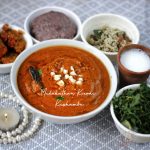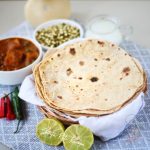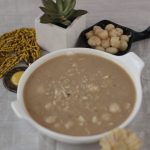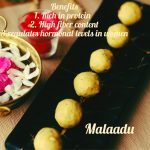Ulli Theeyal Recipe
If you crave for a comfort food from Kerala, then this simple Ulli Theeyal will satisfy you and make your palates addictive....
Ulli Theeyal is a popular dish from the archetypal Kerala Cuisine, much renowned for its original and authentic dishes, which is unique and exemplary of its own kind.
Contents Included;
* An Outlook On Ulli Theeyal
* Ingredients & Instructions
* Tips
* Nutritional Value
* Recipe Excerpt
A Note On Ulli Theeyal:
Theeyal is a much adored festive dish from Kerala and there are many varieties of theeyal of which this Ulli Theeyal is one glorious dish prepared for special occasions like Onam Sadya. With Shallots as the main ingredient, this theeyal is made of a spicy coconut paste steeped in tamarind essence. Shallots is an indispensable ingredient in the South Indian Cuisine including Kerala, as it is versatile and has a mild sweet taste and it spruces up any dish it is added to. Any gourmet who loves Indian Cuisine would be fond of shallots as it always makes a difference to the whole dish. The same magic happens in this Ulli Theeyal, in which the combination of shallots, tamarind, jaggery and coconut oil is fantabulous and we can realize it in the very first morsel. The aroma of roasted coconut with the regular Indian condiments enhances the flavor to a greater level and when it is finally tempered with mustard seeds and fenugreek seeds in the alluring aroma of coconut oil it just feels like heaven.
A Quick Glance On Shallots:
Though a traditional Sadya menu does not include onion in any of the dishes generally, onions and shallots play an important role in kerala cuisine which includes both vegetarian and non vegetarian recipes. Shallots is said to be one of the primitive crops in the world, and over the years it has attained a global reach. It has been grown in India since five thousand years ago and became widely popular in Kerala only in the beginning of this century. Its unique mild sweet flavor makes the dishes exotic and irreplaceable and for example, dishes which have shallots as the key ingredient cannot be prepared with regular onions as it may tend to change the taste and flavor of the whole dish. Whereas paradoxically, onions can be replaced with shallots in most of the Indian dishes, which would finally make them all the more delectable. It can be roasted, fried, sauteed, boiled, pickled and grated raw in multifarious dishes and there are plenty of Indian curries and gravies which have shallots paste as base. Much interestingly, we have a lot of soups, salads and delicacies which are made of this versatile shallots that are popular worldwide.
The Botanical name of Shallots is Allium Ascalonicum and it grows as bulbs in clusters and has varied colors and shapes. It dissolves more easily than regular onions while cooking and has a subtle flavor that seeps into the dish in slow cooking. Apart from being delicious, it is also good for health as it has high antioxidants and are packed with Vitamin A, B6 and C. It boosts digestion and manages diabetes and it prevents the body from allergies like cough and cold. Moreover, it helps in protecting heart and bone health and also aids in fighting germs in the body. It has better nutrition profile than onions and are low in calories. It contains a flavanoid named quercetin that strengthens the capillaries and the blood vessels in the body. It helps in weight management and has minerals like potassium and manganese which are much required for many of the internal functions of the body. Though regular onions became more popular in the past few decades, shallots has made a huge comeback in the recent years and there is a lot of demand for fresh shallots in the global market and the requirement is on the rise every year. Let us be prudent enough to make use of this valuable ingredient in our day today cooking in various forms and ways. All we need to do is just to try out the simple recipes our mothers and grandmothers prepared for us.
There are plenty of ways to incorporate this medicinal bulb in our day today cooking and there are innumerable recipes too. Let us start our journey of well being with this simple yet astounding recipe Ulli Theeyal:
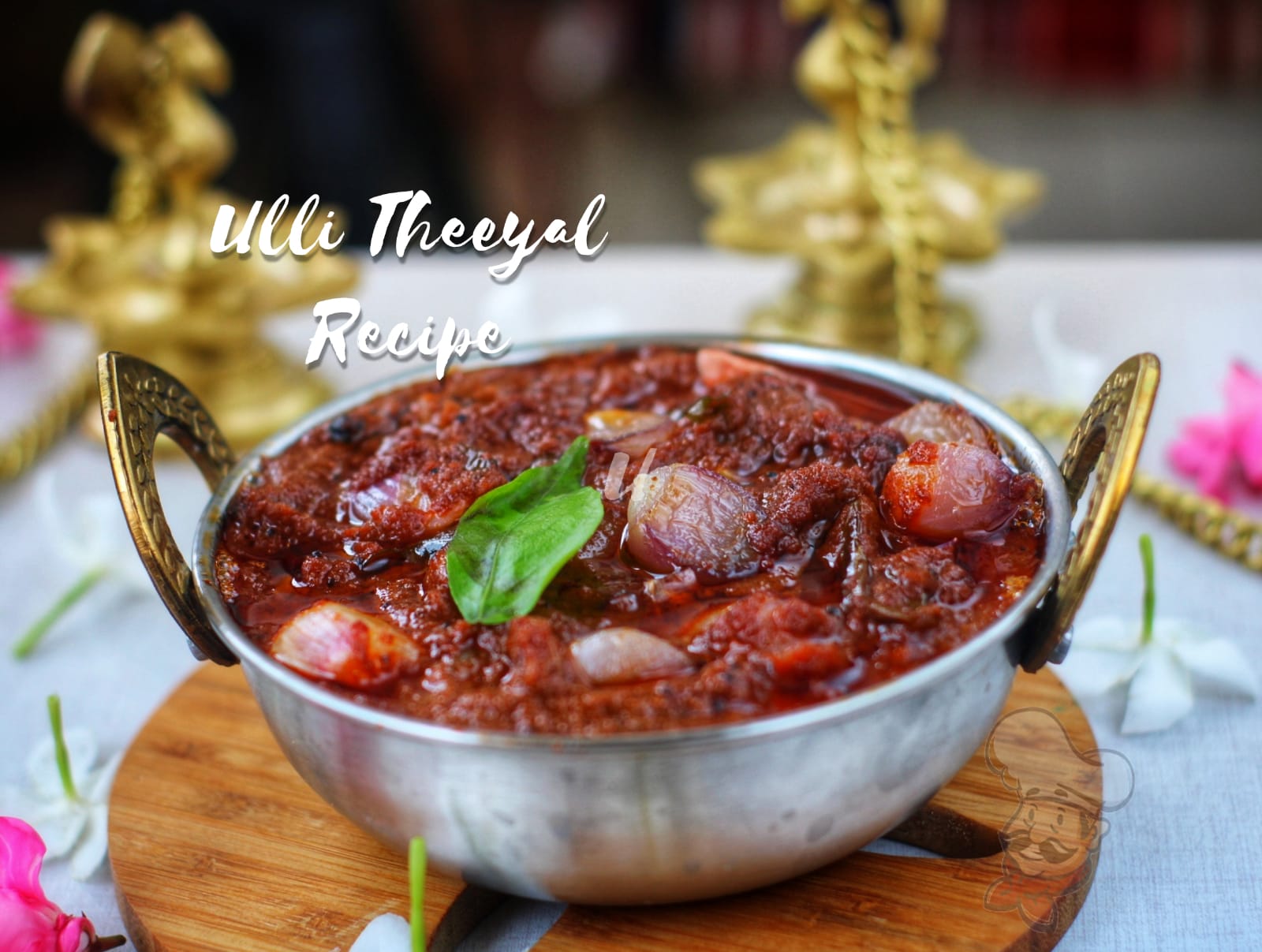
Ingredients Required To Make Ulli Theeyal Recipe :
How To Make Ulli Theeyal Recipe
Take a tiny ball of tamarind and soak it in hot water and keep aside. Choose dark colored tamarind as it gives the best taste for theeyal. When it cools down, squeeze the tamarind and collect the extract out of it and keep aside.
Heat a heavy bottomed cheena chatti (preferably cast iron chatti) and drop in four to five dried red chilies and stir in low flame. Then add a tablespoon of coriander seeds and dry roast it for a while. Add a little fenugreek seeds and finally squirt in some freshly grated coconut and stir for a while. When it turns fragrant, just transfer the ingredients to a plate and keep aside. Just after a few minutes, when it cools down, grind it in a arakallu and make a smooth paste out of it.
Heat the cheena chatti again and tip in three tablespoons of coconut oil and when it is heated just throw in some mustard seeds. Follow it up with a tiny bit of asafoetida and some fenugreek seeds and when it becomes aromatic, drop some roughly torn curry leaves and wait for a second to sizzle. Now add the shallots and sautee well for a two to three minutes along with the required salt. When it becomes soft, just add a quarter teaspoon of turmeric powder and stir in for a second or two. Now pour in the tamarind extract with a nice stir. Pop the lid on and let it boil for five minutes approximately in medium high flame. After a while, just take out the lid and add in the coconut paste and dilute it with a little water after sauteing it well for a minute.
Close the lid again and allow it to boil in high flame for five to seven minutes approximately. When the aroma starts wafting out from the cheena chatti, just take off the lid and simmer. Stir in for a while and when it reaches the desired (reasonably thick) consistency just wait for a few moe seconds for the oil to separate at the sides. Just turn off the flame and garnish it with some lush green curry leaves. Now the lip-smacking Ulli Theeyal is ready to eat. Serve it hot with matta rice with a drizzle of ghee.
Tips and tricks to make Ulli theeyal recipe
* Both Red or pink shallots can be chosen to make this ulli theeyal and dark tamarind is preferred than the lighter one.
* While roasting the spices and coconut, do it in low flame as the desired reddish brown color and the properly deep roasted flavor should not be spoiled at any cost. Half the work is done if you get it right.
* Using of rock salt and soild asafoetida is suggested for traditional recipes like ulli theeyal.
* It goes well with Appam, Idiyappam and idli.
* Similarly, grounding it in arkallu and using manchatti give an authentic taste to the whole dish and at least once in a while you can prepare it that way when you feel nostalgic about your home town and family.
* Ulli Theeyal tastes the best the next day and therefore you can store it in the same chatti at room temperature and use later and you may need nothing more than a pappadam as accompaniment. The combination of hot red rice with a little cow's ghee and ulli theeeyal (made in manchatti) is tantalizing and all of us should try it out at least once. And please do make a little effort to eat in a fresh banana leaf to relish the dish to the fullest.
Ingredients
Directions
Take a tiny ball of tamarind and soak it in hot water and keep aside. Choose dark colored tamarind as it gives the best taste for theeyal. When it cools down, squeeze the tamarind and collect the extract out of it and keep aside.
Heat a heavy bottomed cheena chatti (preferably cast iron chatti) and drop in four to five dried red chilies and stir in low flame. Then add a tablespoon of coriander seeds and dry roast it for a while. Add a little fenugreek seeds and finally squirt in some freshly grated coconut and stir for a while. When it turns fragrant, just transfer the ingredients to a plate and keep aside. Just after a few minutes, when it cools down, grind it in a arakallu and make a smooth paste out of it.
Heat the cheena chatti again and tip in three tablespoons of coconut oil and when it is heated just throw in some mustard seeds. Follow it up with a tiny bit of asafoetida and some fenugreek seeds and when it becomes aromatic, drop some roughly torn curry leaves and wait for a second to sizzle. Now add the shallots and sautee well for a two to three minutes along with the required salt. When it becomes soft, just add a quarter teaspoon of turmeric powder and stir in for a second or two. Now pour in the tamarind extract with a nice stir. Pop the lid on and let it boil for five minutes approximately in medium high flame. After a while, just take out the lid and add in the coconut paste and dilute it with a little water after sauteing it well for a minute.
Close the lid again and allow it to boil in high flame for five to seven minutes approximately. When the aroma starts wafting out from the cheena chatti, just take off the lid and simmer. Stir in for a while and when it reaches the desired (reasonably thick) consistency just wait for a few moe seconds for the oil to separate at the sides. Just turn off the flame and garnish it with some lush green curry leaves. Now the lip-smacking Ulli Theeyal is ready to eat. Serve it hot with matta rice with a drizzle of ghee.

